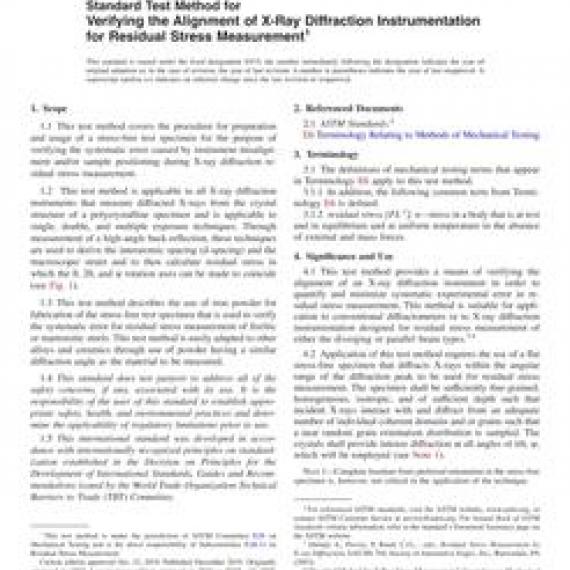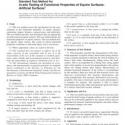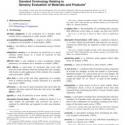No products
ASTM E915-19
ASTM E915-19 Standard Test Method for Verifying the Alignment of X-Ray Diffraction Instrumentation for Residual Stress Measurement
standard by ASTM International, 10/15/2019
Full Description
1.1This test method covers the procedure for preparation and usage of a stress-free test specimen for the purpose of verifying the systematic error caused by instrument misalignment and/or sample positioning during X-ray diffraction residual stress measurement.
1.2 This test method is applicable to all X-ray diffraction instruments that measure diffracted X-rays from the crystal structure of a polycrystalline specimen and is applicable to single, double, and multiple exposure techniques. Through measurement of a high-angle back-reflection, these techniques are used to derive the interatomic spacing (d-spacing) and the macroscopic strain and to then calculate residual stress in which the , 2, and rotation axes can be made to coincide (see Fig. 1).
FIG. 1X-Ray Diffraction Residual Stress Measurement Geometry and Angles Defined


1.3This test method describes the use of iron powder for fabrication of the stress-free test specimen that is used to verify the systematic error for residual stress measurement of ferritic or martensitic steels. This test method is easily adapted to other alloys and ceramics through use of powder having a similar diffraction angle as the material to be measured.
1.4This standard does not purport to address all of the safety concerns, if any, associated with its use. It is the responsibility of the user of this standard to establish appropriate safety, health, and environmental practices and determine the applicability of regulatory limitations prior to use.
1.5This international standard was developed in accordance with internationally recognized principles on standardization established in the Decision on Principles for the Development of International Standards, Guides and Recommendations issued by the World Trade Organization Technical Barriers to Trade (TBT) Committee.


































